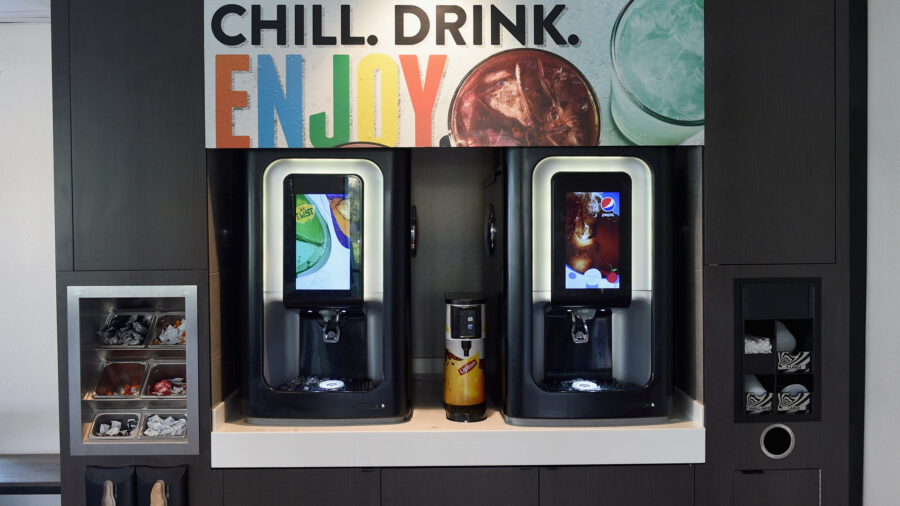At 2023’s outset, several restaurant chains have been innovating their dine-in experience to stay relevant and competitive; some with great success.
A recent report by Placer.ai noted that some chains are making waves with consumers that – now, more than ever – are looking for fun and affordable dining experiences. By observing monthly dining visit patterns in key areas, Placer.ai identified multiple unique and effective strategies according to its data analysis.
What the company found was that consumers are looking for cheaper options during this inflationary period, but still don’t want to sacrifice experience overall.
Whether it be in a traditional sit-down setting or a fast food takeout option, consumers are interested in trying a fresh take on the classics, but doing so on a budget.
Era of “Fast Social”
A prime example of a restaurant chain vigorously innovating its brand is Taco Bell. Back in 2015, the Tex-Mex chain first introduced its “Cantinas” concept. These locations offer traditional Taco Bell menu items but also include shareable appetizers, refreshing alcoholic beverages, and a so-called “fast social” dining experience, Forbes noted.
The name of the game when it comes to these locations is “dwell time.” Customers are spending significantly more time on average — sometimes twice as long — at Cantinas compared to neighboring, traditional Taco Bell fast food restaurants, according to Placer.ai. This is largely thanks to the emphasis put on promoting social interactions.
Taco Bell Cantinas are built for the kind of social gathering consumers have longed for since the outset of the pandemic. Some have game rooms, host a drag brunch performance, or offer outdoor seating complete with a firepit and bean-bag toss boards. There’s even a wedding chapel in — you guessed it — the Las Vegas location.
Taco Bell currently has Cantina style restaurants, as well as alcohol-free “Urban Inline” locations, in major cities across the U.S. with more on the way.
Experience vs. Cost
Whether it’s a nationwide franchise or a regional restaurant chain, findings show that consumers are responding positively to businesses willing to try something new and unique. This can be as simple as a trendy new menu item.
Analyzing data across demographics, Placer.ai revealed key points to remember for restaurants looking to stay ahead of the pack:
- Affordability is the bottom-line factor for customers.
- Innovation can lead to greater sales.
- People need quick and ready food, for the right price.
- Consumers like to see health and wellness at the forefront.
- Above all else, people want an experience when dining out.
Restaurants are experimenting with new items that feature flavor profiles made popular online (as noted by Thrillist), or meals that meet the needs of specific diets and lifestyles. Such innovations can be big or small to be effective; consumers just need to see effort put toward improving experience and affordability. And these strategies can be implemented effectively in any type of business offering foodservice.
C-Store Evolution
With work-from-home being a thing of the past for many, there’s been a steady rise in demand for affordable, prepared meals and snacks. To meet this demand, convenience stores have been ramping up their hot meal options, with some even offering drive-thru services.
Placer.ai observed that many c-stores benefit from the fact that they also carry a variety of essential items. Dubbed the “Slurpee Effect,” shoppers making household purchases can be upsold on refreshments and small treats at the counter.
7-Eleven takes this idea even further. Last June, 7-Eleven announced the opening of its ninth “Evolution Store” in Dallas. The chain now has five such Evolution locations throughout the Dallas-Fort Worth metroplex, with the intention of testing out these concept stores to service specific areas. These c-stores offer traditional products but take their food to the next level, boasting sit-down restaurant service in partnership with local eateries.
Data shows these Evolution locations are experiencing far greater amounts of foot traffic on average, reinforcing the idea that investing in customer experience can pay big dividends for businesses.
The Food Institute Podcast
Click the play button above to listen to the episode.
Cyber threats are a growing issue for the food industry, but what can food companies do to keep their data safe and operations intact? More importantly, how should you react after a cyber-intrusion takes place? Arete Incident Response’s DJ Schalk discusses common threat vectors and explores ransom negotiations, while HUB International’s Sommer Chanady and Brian Schnese discuss how insurance can protect your business and best practices to help prevent an intrusion in the first place.




